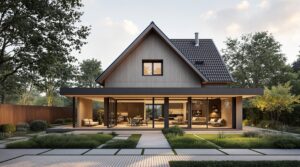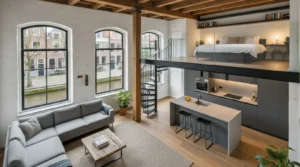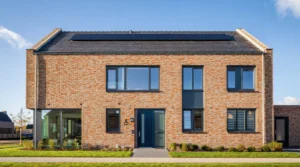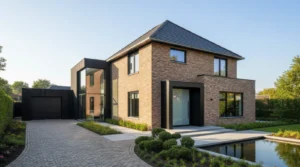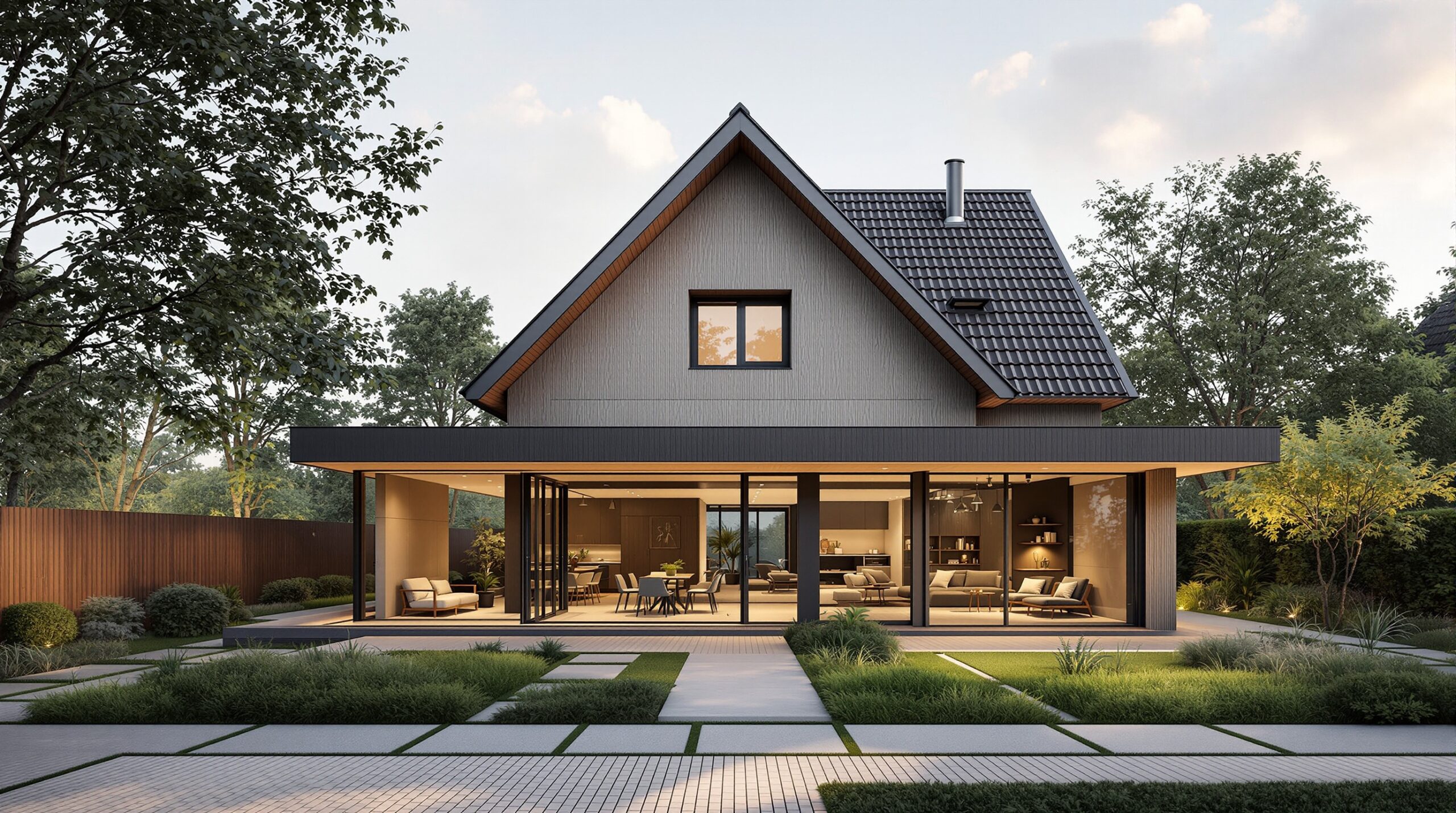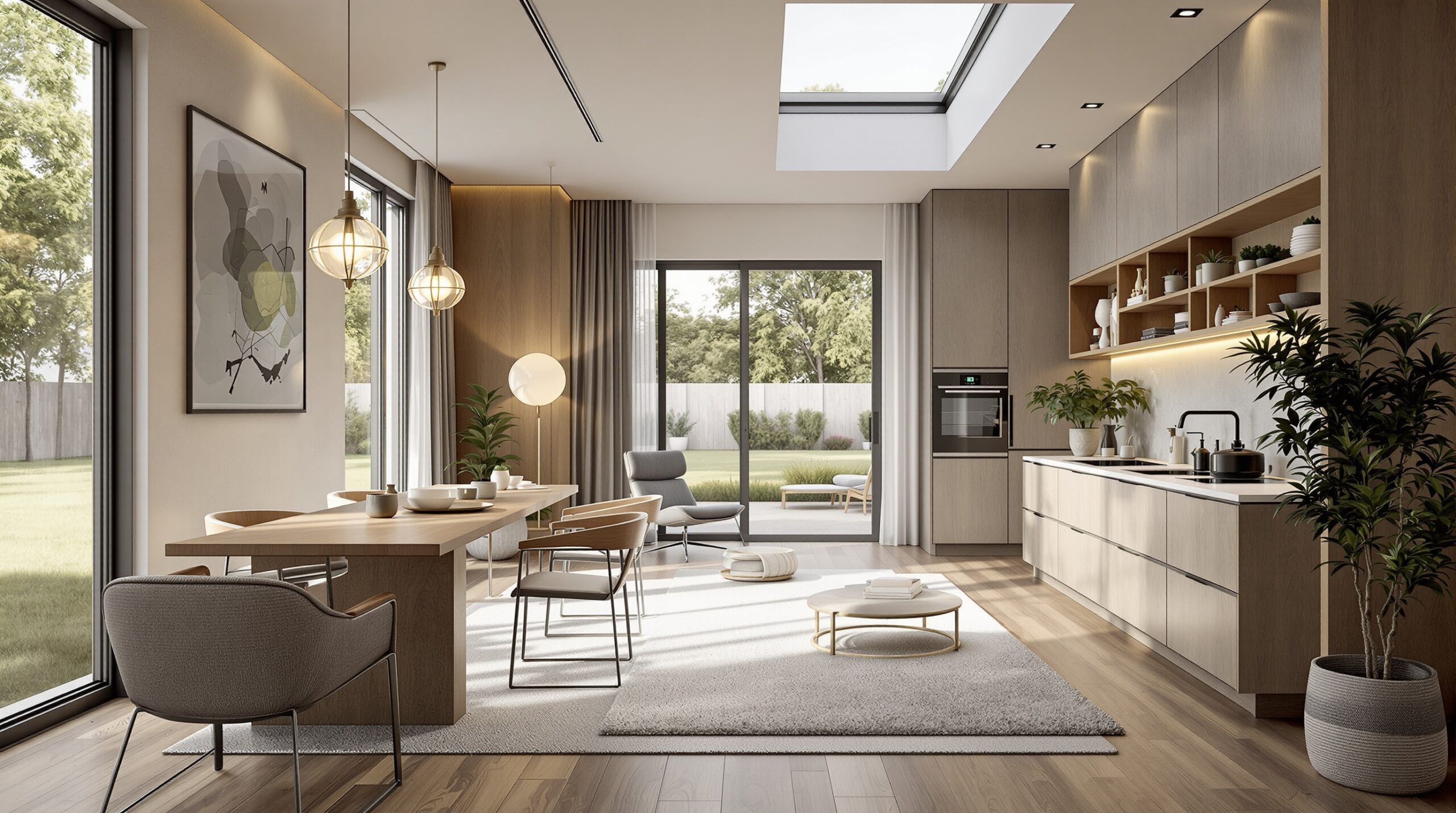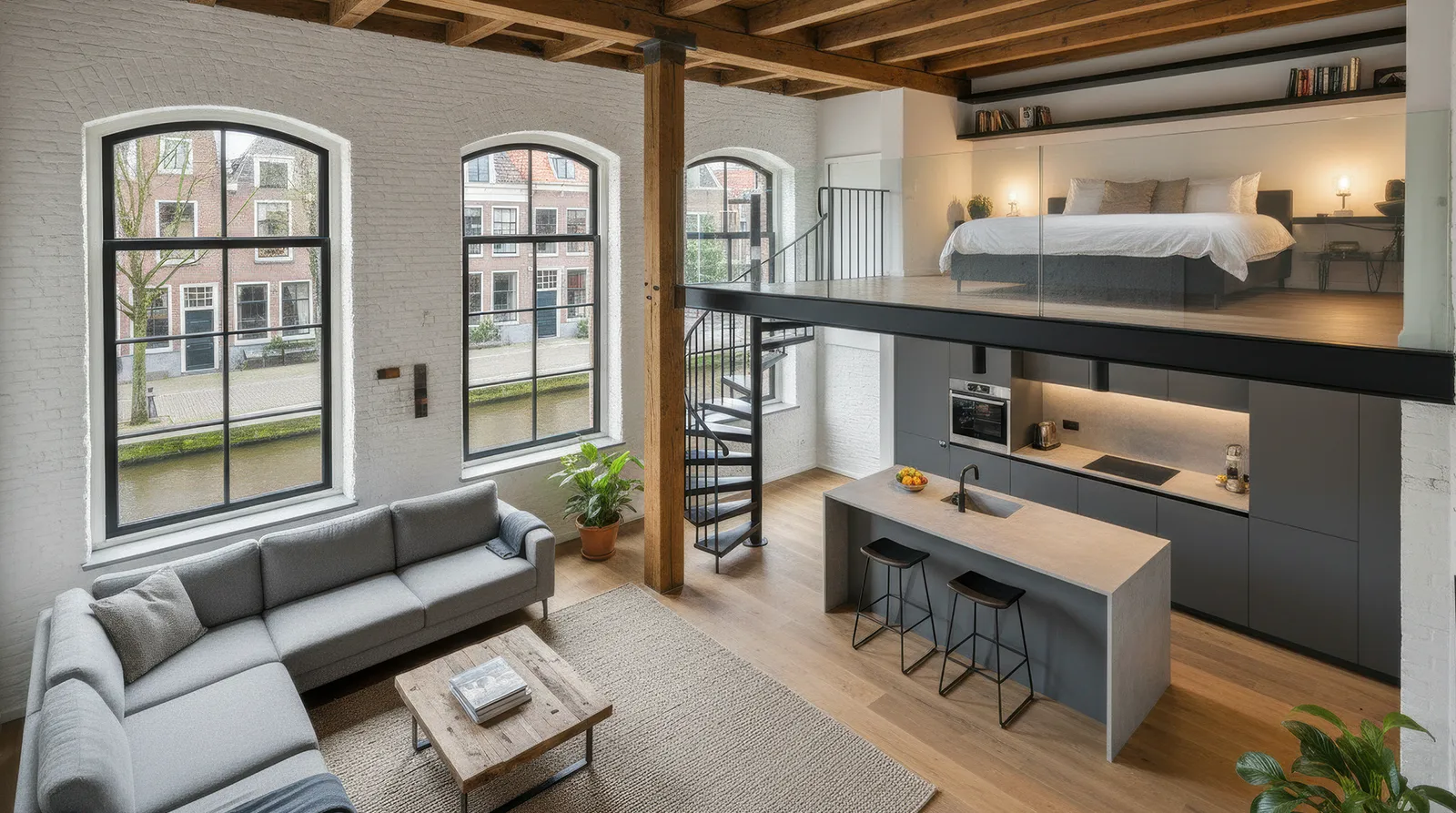The Intelligent Upgrade: Unpacking Smart Home Trends in the Netherlands for 2026
Ever wondered what it truly means for a home to be ‘smart’? It’s more than just turning lights on with your phone. In the Netherlands, the landscape of home renovation is shifting, with a growing emphasis on intelligent systems that transform houses into responsive, intuitive living spaces. As we edge closer to 2026, the integration of cutting-edge technology, particularly AI, into Dutch homes isn’t just a luxury; it’s becoming a foundational element of modern living, influencing everything from energy efficiency to daily convenience.
But how do these futuristic ideas translate into practical applications for Dutch homeowners? What are the key trends shaping how we build, renovate, and interact with our homes? This article will explore the exciting evolution of smart home technology in the Netherlands, examining the driving forces behind its adoption, the transformative power of AI, and what you, as a homeowner, need to consider when planning your next intelligent update.
Basic Concepts: Decoding the Dutch Smart Home Lexicon
Before we dive into the specifics, let’s establish a common understanding of some key terms, especially in the context of Dutch home renovation and technology.
- Smart Home Technology: At its core, this refers to devices and systems that connect to a central network, allowing for automated control and remote management of household functions. Think of it as your home’s central nervous system, where different components communicate to make your life easier.
- Internet of Things (IoT): This is the underlying framework. IoT is a network of physical objects embedded with sensors, software, and other technologies that connect and exchange data with other devices and systems over the internet. In a smart home, your thermostat, lighting, security cameras, and even your refrigerator can all be part of the IoT.
- Artificial Intelligence (AI): This is the brain behind the brawn. AI enables smart home systems to learn from your habits and preferences, anticipate your needs, and make intelligent decisions without constant human input. It’s what moves a system from simply being programmable to being truly adaptive.
- Domotica: This is the Dutch term for home automation or smart home technology. If you’re discussing a smart home upgrade with a Dutch contractor during a house renovation, this is the term you’ll likely hear.
- BENG (Bijna Energieneutraal Gebouw): While not directly smart home technology, BENG regulations (Nearly Energy-Neutral Building) are a powerful driver for the adoption of smart solutions in the Netherlands. These regulations mandate high levels of energy efficiency in new builds and major renovations, making smart climate control and energy monitoring systems increasingly essential.
Main Sections: The Pillars of Intelligent Living
1. The Rise of Predictive Living: AI-Powered Automation
Imagine a home that knows you. Not just your schedule, but your preferences, your comfort zones, and even your mood. This isn’t science fiction; it’s the reality AI is bringing to Dutch smart homes.
How does AI transform a house into a truly intuitive space?
The magic of AI lies in its ability to analyze vast amounts of data – your daily routines, local weather patterns, energy prices, even sensor readings from your home environment. From this analysis, it learns to optimize various aspects of your living experience without you constantly needing to intervene. For instance, AI-powered thermostats go beyond simple programming; they learn when you’re typically home, open windows, or prefer a warmer room, adjusting heating and cooling proactively to maintain comfort and minimize energy waste. This is particularly relevant given the emphasis on energy efficiency in house renovation Netherlands projects, where every kilowatt-hour counts.
Consider the typical Dutch house extension: expanding living space often means recalibrating heating and ventilation. AI can seamlessly integrate these new zones, ensuring consistent comfort and efficiency across the entire property, rather than creating energy “cold spots” or “hot spots.” This level of sophisticated control significantly reduces your energy footprint, aligning perfectly with national targets for sustainable building. For homeowners undertaking a complete house renovation, designing with AI from the outset means creating a future-proof property that adapts and evolves with their needs.
2. Beyond Security: Integrated Safety and Wellness Systems
Traditionally, smart home security meant cameras and alarms. While these remain crucial, the trend in the Netherlands is towards comprehensive, integrated safety and wellness systems that extend far beyond simple intrusion detection.
What does this holistic approach entail?
Modern smart homes incorporate sophisticated sensor networks that monitor a variety of environmental factors. We’re talking about smart smoke detectors that not only alert you to fire but can also pinpoint its location and automatically notify emergency services. There are CO2 sensors that detect dangerous gas levels, and even water leak detectors that can shut off the main water supply to prevent extensive damage. These systems are invaluable, especially in older properties undergoing a complete house renovation, where aging infrastructure might pose risks.
Moreover, these systems are increasingly focusing on occupant wellness. Air quality sensors, for example, can monitor particulate matter, VOCs (Volatile Organic Compounds), and humidity, automatically triggering ventilation systems or air purifiers to maintain a healthy indoor environment. For families with allergies or respiratory issues, this is a game-changer. Imagine a smart home in Amsterdam that automatically adjusts ventilation based on pollen count forecasts, creating an allergen-free sanctuary. This focus on health and well-being is a growing trend, elevating the smart home from a convenience to a critical component of a healthy lifestyle.
3. Sustainable Living: The Smart Path to Energy Independence
The Netherlands is a leader in sustainable practices, and the smart home market reflects this commitment. Energy efficiency isn’t just about saving money; it’s about reducing environmental impact. Smart technology is instrumental in achieving this goal, particularly in the context of Dutch house renovation projects.
How do smart systems contribute to a greener home?
The integration of smart meters, solar panel optimization, and intelligent energy storage solutions is transforming how Dutch homes consume and generate power. AI algorithms can analyze electricity prices in real-time, charging home batteries during off-peak hours and discharging them when rates are higher, or even feeding excess power back into the grid. This means your home isn’t just consuming energy; it’s actively managing its energy economy.
Beyond energy management, smart irrigation systems in gardens can monitor soil moisture and weather forecasts, ensuring lawns and plants receive only the water they need, preventing waste. Smart waste sorting systems, still in their nascent stages, promise to further automate and improve recycling efforts. For homeowners embarking on a large-scale house extension Amsterdam, integrating these sustainable elements from the blueprint stage ensures a highly efficient and environmentally responsible property.
The focus on sustainable building materials also plays a role here. While not strictly “smart” in the electronic sense, the choice of materials like recycled insulation or responsibly sourced timber, combined with smart climate control, creates a truly eco-conscious environment. When planning for a house renovation Netherlands, considering the synergy between smart technology and sustainable materials is crucial for both environmental impact and long-term cost savings.
4. The Connectivity Conundrum: Seamless Integration and Future-Proofing
The biggest challenge, and opportunity, in smart home technology is achieving seamless integration. A collection of disparate smart gadgets doesn’t make a smart home; a unified ecosystem does. As we look towards 2026, the trend is towards universal platforms and robust network infrastructures.
What does true integration look like?
It means your smart speaker can communicate with your lighting, your heating, your security system, and your entertainment unit, all through a single command or automated routine. The shift is away from proprietary systems that lock you into one brand, towards open standards that allow devices from different manufacturers to communicate effectively. This is crucial for homeowners planning a complete house renovation, as it offers flexibility and avoids obsolescence.
The backbone of this integration is a reliable and secure home network. With an increasing number of devices demanding bandwidth, a robust Wi-Fi 6 or even Wi-Fi 7 network is becoming essential. Furthermore, cybersecurity for your home network is paramount. A compromised smart home can become a gateway for cyber threats, so professional installation and configuration, including strong encryption and regular updates, are non-negotiable.
When considering a large project like a house extension, ensure your plans include provisions for ample network cabling and strategic placement of access points (think ‘bouwvergunning’ for your digital infrastructure). This pre-planning prevents costly retrofits and ensures your smart home’s “nervous system” is robust enough for future technological advancements.
Practical Tips for Your Smart Home Renovation
Planning a complete house renovation or a house extension Amsterdam with smart technology in mind? Here’s how to make intelligent choices.
- Define Your Needs: Before buying any smart device, identify the problems you want to solve or the conveniences you seek. Do you want to save energy? Improve security? Enhance comfort? Your answers will guide your technology choices. For your next house renovation Netherlands project, make a wish list of smart functionalities.
- Prioritise the Backbone: Invest in a strong, secure home network. This is the foundation upon which all your smart devices will operate. Consult with professionals to design a network that supports your current needs and future expansions.
- Think Ecosystem, Not Gadgets: Aim for a unified smart home platform rather than a collection of standalone devices. Discuss interoperability and ecosystem compatibility with your renovation professionals.
- Consider Professional Installation: While some smart devices are “DIY-friendly,” for a truly integrated and secure smart home, especially during a complete house renovation or house extension, always hire experienced professionals. They understand electrical codes, network architecture, and proper configuration, ensuring everything works safely and efficiently. This also applies to any required ‘bouwvergunning’ documentation related to electrical or structural changes.
- Focus on Energy Efficiency: Prioritise smart devices that help you monitor, manage, and reduce energy consumption. Look for systems that integrate with solar panels, smart meters, and dynamic tariffs. This is particularly important for meeting BENG requirements in the Netherlands.
- Plan for the Future: Choose systems that are scalable and can be updated as technology evolves. Ask about software updates and device compatibility. Your house extension today should accommodate tomorrow’s innovations.
- Security is Paramount: Ensure all smart devices and your home network are protected with strong passwords, two-factor authentication, and regular security updates. Your renovation professional can advise on best practices for securing your intelligent home.
Conclusion: The Intelligent Evolution of Dutch Homes
The journey towards smarter homes in the Netherlands is an exciting one, driven by a confluence of technological innovation, environmental consciousness, and a desire for enhanced comfort and security. As we approach 2026, AI is moving from novelty to necessity, transforming how we interact with our living spaces, making them more adaptive, efficient, and ultimately, more enjoyable.
For Dutch homeowners considering a house renovation, a house extension, or even a complete overhaul, the integration of smart home technology is no longer an afterthought. It’s becoming a fundamental aspect of modern design and construction, offering unprecedented opportunities to create properties that are not only beautiful but also intelligent, responsive, and future-proof. By understanding these trends and making informed decisions, you can ensure your next renovation project results in a home that truly understands and anticipates your needs. The future of living is smart, and in the Netherlands, that future is already taking shape, one intelligent home at a time.


